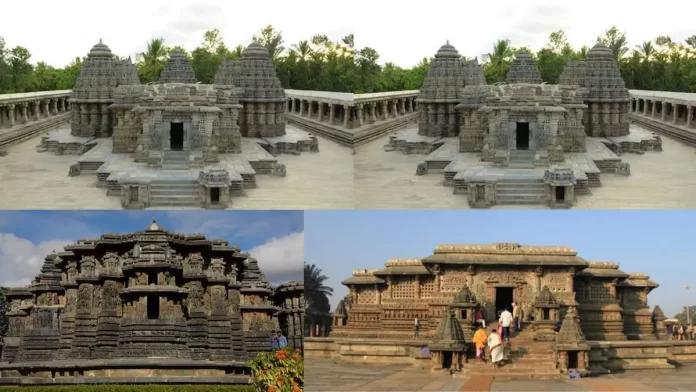The Hoysala temples in Karnataka have been finalized as India’s nomination for consideration as World Heritage for the year 2022-2023.
Vishal V. Sharma, India’s Permanent Representative to UNESCO on Monday formally submitted the nomination to Lazare Eloundou, UNESCO Director of World Heritage,
In a tweet, he said, “India is proud to nominate the Sacred Ensembles of the Hoysalas for @UNESCO’s World Heritage List! Art historians recognize the exceptional sculptural artistry of the ensembles to be among the masterpieces of Asian art”.
#India is proud to nominate The Sacred Ensembles of the Hoysalas for @UNESCO’s World Heritage List! Art historians recognize the exceptional sculptural artistry of the ensembles to be among the masterpieces of Asian art. @ASIGoI pic.twitter.com/bu2rmDpou7
— Vishal V. Sharma 🇮🇳 (@VishalVSharma7) January 31, 2022
According to PIB, these “Sacred Ensembles of the Hoysala” at Belur, Halebid, and Somnathapura are on UNESCO’s Tentative List since April 2014.
These temples represent one of the highest points of human creative genius and stand testimony to the rich historical and cultural heritage of our country.
Historical Importance of Hoysala Temples in Karnataka
The Hoysalas temples in Karnataka’s Belur, Halebid, and Somnathapura were built by the rulers of the Hoysala dynasty of South India in the 12th-13th centuries.
These temples attest to the creativity and skill of the Hoysala artists and architects who built these masterpieces of a kind never seen before or since.
The Hoysala architects used their profound knowledge of temple architecture in different parts of India to their advantage.
The Hoysala temples in Karnataka have a basic Dravidian morphology but show strong influences of the Bhumija mode widely used in Central India, the Nagara traditions of northern and western India, and the Karnataka Dravida modes favored by the Kalyani Chalukyas.
Therefore, the Hoysala architects made considered and informed eclectic selections of features from other temple typologies which they further modified and then complemented with their own particular innovations.
It resulted in the birth of a completely novel “Hoysala Temple” form of temple architecture.
Conservation Plan of Hoysala Temples
All these three Hoysala temples in Karnataka are protected monuments of the Archaeological Survey of India (ASI) which conserves and maintains these sites.
The state government will ensure the conservation of state-protected monuments which are around these three monuments since it would add to the visual integrity of the place.
The District Master Plan of the state government will also incorporate the buffers of all monuments and build an integrated management plan.
The state government will also look at the traffic management issues to be looked into especially around the designated property.
Nomination Process
World Heritage Sites are designated by UNESCO for having cultural, historical, scientific, or other forms of significance.
The first step involves the submission of the dossier to the World Heritage Centre which in turn does the technical scrutiny of the same.
Once the submission is made, UNESCO will communicate back by early March. After that, the site evaluation will happen in the fall of 2022 and the dossier will be taken up for consideration in mid-2023.
Sri G Kishan Reddy, Minister of Culture, Tourism, and Development of Northeastern Region stated “This is a great moment for India to see the Sacred Ensembles of the Hoysalas temples in Karnataka being submitted for inscription in the World Heritage List”.
“The Government under the leadership of Prime Minister Shri Narendra Modi is committed to both Vikas and Virasat. Our efforts in protecting our Virasat is evident from the work the government has been putting in inscribing both our tangible and intangible heritage and also repatriating the cultural heritage that was stolen or taken away from India”, he added.
